Updated: 29-May-2022
Righter Manufacturing Company was a Californian manufacturer of small 2-stroke engines for target aircraft etc.
-The company was founded by Walter Righter, and made 2 and 4-cylinder 2-stroke engines between 1940 and 1947.

“Righter”
-These engines were preferably installed on Radioplane target aircraft. We can see the following types of these engines.
-The Military O-15-1 model is the 2GS-17, with two horizontal cylinders and with simultaneous ignition in both.
-The -41 series had a manual spark advance and the -42 and -43 series had a centrifugal advance. The GS had reduction gear and additional gears for counter-rotating the two propellers.
-It was manufactured by Herkimer Tools and Model Works, it gave between 6 and 8.25 HP around 4,000 rpm and dates from between 1940-45.
-The O-15-3 version had the same previous arrangement but with a rotary intake valve. McCulloch also made them.
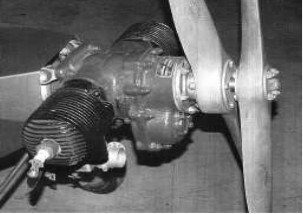
“Better view of the gearbox”
-In the previous illustration we see the gearbox for speed reduction and reversion of the rotation direction for the two propellers. It was installed on a Radioplane target drone.
-The 2S-45 (O-45-1) version gave 20 HP at 3,800 rpm and 35 HP at 4,250 rpm.
-This engine was also manufactured by Kiekhaefer and Menasco in addition to Righter itself.
-From the 4-cylinder model, we know that it gave 16 HP and was made at the end of WWII.
-There is an information entry in the USNA under reference 3027/452.8.
From Appendix 6: The information on this brand of small motors used on RPVs, Drones and Radioplane Target drones almost exclusively continues to expand.
-The history of Righter begins in 1935 when Walt Righter built the first engine for small aeroguided aircraft, the GS-17.
-They were almost model aircraft but much more technical, advanced and bigger, mainly because they used two contra-rotating propellers.


“Photo and schematic of the first Righter, the GS-17”
-The GS-17 was known as the Dennymite 57.
-We now see Walt Righter with a double version of the Dennymite but in an uncommon arrangement.

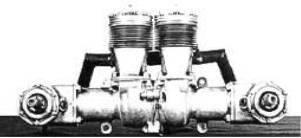
“Walt and a double Dennymite”

“The tests they did in the Mojave desert”
-It is strange to see that this two-engine combination has elbowed mechanisms, only to be justified to give stability as the rotation is coupled and counter-rotatory.
-Now we are doubting that the engine that appears in the UFE's chapter with Ref. 14, is a variant of the engine, in a vertical opposed arrangement on a Radioplane RP-4. The engine was the Sidewinder.
-Beginning with the opposed cylinder engines, there is the "RP-1 Twin", somewhat larger and that we see compared to a Dennymite.

“Comparison and evolution”
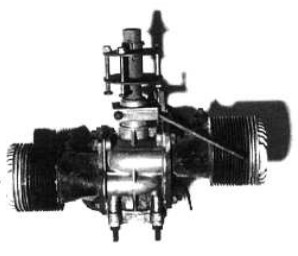
“The RP-1 Twin, with a single propeller”
-Thereafter the 2-GS-17 (Army O-15-1) follows. It had contra-rotating propellers.
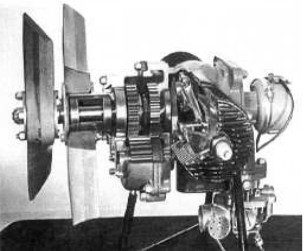
“The 2-GS-17 cutaway for showing details”
-The 2-S-17 (Army O-15-3) with a single propeller.
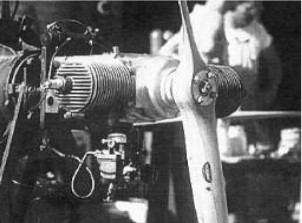
“The Righter 2-S-17”
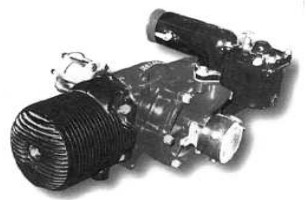
“2-S-45 (Army O-45-1)”
-The 2-S-45 was also manufactured by Menasco. Finally the Army 4-O-34A, with four cylinders and a single propeller.
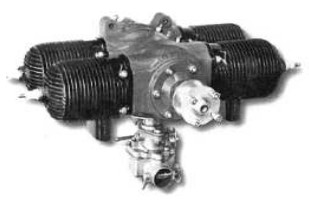
“Army 4-O-34A”
-We obtained a photo gallery of five Righter engines from the San Diego Museum's Engine Reserve Depot, California.
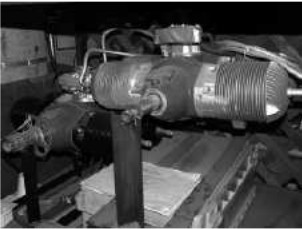
“Two 4-cylinder engines”

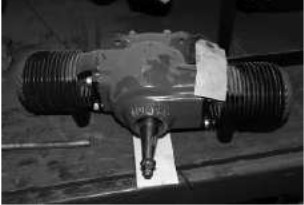
“Two twin-cylinders”

"The fifth Righter, half-hidden in the center"
Engines of RIGHTER
Model: 4.O-34A
Arquitecture:
Cooling:
Total Displacement:
Bore / Stroke: x
Power:
Weight:
Model: O-15 (2GS-17. -12. etc.)
Arquitecture:
Cooling:
Total Displacement:
Bore / Stroke: x
Power:
Weight:
Model: O-45 (2S-45)
Arquitecture:
Cooling:
Total Displacement:
Bore / Stroke: x
Power:
Weight:


